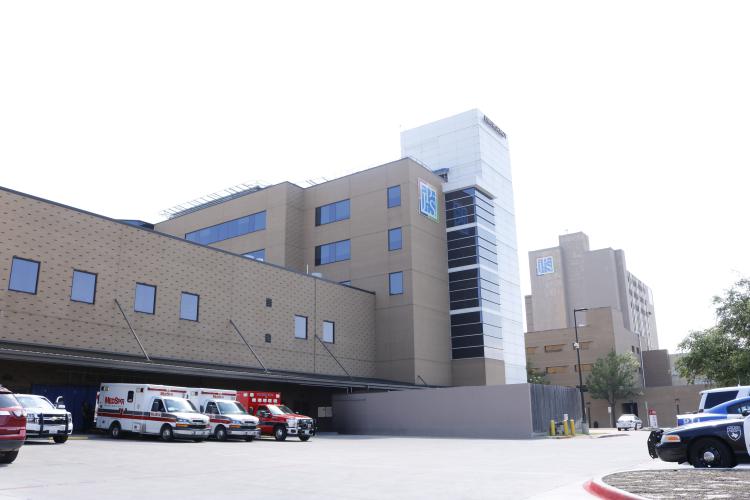
It’s time to think about being safe on the road.
The end of summer and beginning of fall is the busiest time of year in the Trauma and Emergency departments at JPS Health Network. Why? Because of a surge of motor vehicle crashes that happen as more cars hit the road, taking kids back to school, according to JPS Health and Injury Manager Mary Ann Contreras. As Tarrant County’s lone Level I Trauma Center, the toughest crash cases are brought to JPS by ambulance and helicopter.
Being more careful could not only help you stay out of a wreck. It could serve as an example for your kids to follow when they get behind the wheel, protecting them when you’re not there. Contreras said it’s never too early talk to your teenagers about safe motoring, especially when it comes to driving home the fact that they must put down their cell phone while they’re behind the wheel.
“This time of year, there are more crashes from teens as they head back to school, many in their own vehicles,” Contreras said. “Motor vehicle crashes and motorcycle crashes are the leading cause of trauma admission at JPS. Most of our admissions are adults, but we do have some older teens as well. Teens learn behaviors from their parents, who also text and drive.”
According to the American Automobile Association, 94 percent of teens reported that they understand texting while driving is dangerous. But 35 percent of the young drivers admitted that they continue to do it anyway. About 21 percent of fatal crashes involving teenage drivers are related to cell phone usage.
The National Safety Council reports that people are six times more likely to be involved in a crash while texting than they are while driving intoxicated. That adds up to about 1.6 million cell phone-related collisions annually in the United States.
According to National Safety Council statistics, the top five hazards behind the wheel are:
- Driving while distracted: Talking on the phone and texting are the things we think of when we hear the words “distracted driving.” But talking to people in the car with you can be just as dangerous – especially when it’s a car full of teenagers. Other causes of distracted driving that have taken a back seat to cell phones include eating while driving, putting on makeup or grooming behind the wheel or even reading.
- Speeding: Another common driving mistake for inexperienced drivers, it’s the second-most common cause of crashes.
- Drunken driving: It’s a problem for people of all ages, even those too young to drink alcohol legally. It’s important for parents to remind their kids often to call – don’t drive – if they’ve had any alcohol.
- Rain: Wet weather can cause all sorts of problems on the road. If it hasn’t rained for a while, a shower can mix with oil and grit on the roadway to make it especially slick. Ponding water can cause hydroplaning or unexpected loss of visibility if water from a big puddle or spray from the wheels of a truck are suddenly splashed on your windshield.
- Night driving: Motoring in the dark offers a whole new set of challenges in addition to the ones we encounter during the day. There is less visibility which means things can happen unexpectedly. Extra caution is required but not always exercised by teens and adults alike.
JPS Trauma Medical Director Dr. Rajesh Gandhi said he doesn’t like the word “accidents” when it comes to traumatic injuries because it gives the impression that they’re just happenstances that are unavoidable.
“It’s not an ‘accident’ because there is a cause that is preventable,” Gandhi said. “Maybe there was gravel on the road or maybe the driver was going too fast for conditions. Or maybe the driver was distracted by something like talking on the phone or texting behind the wheel. ‘Accidents’ happen because things that couldn’t be helped. Crashes happen for reasons that we can fix or prevent. We need to think about the things we can do to prevent them from happening.”
